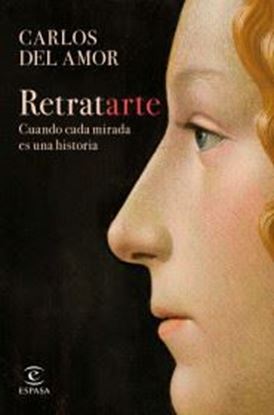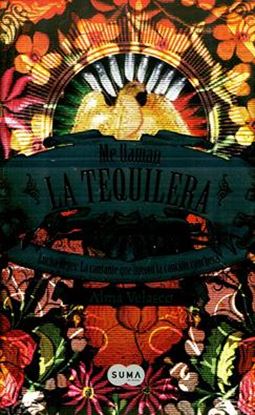

RETRATARTE. CUANDO CADA MIRADA ES UNA HI
Carlos del Amor va un paso más allá en el viaje a través de los cuadros que emprendió con Emocionarte. Esta vez se centra en el retrato, un género que le permite recrear las vidas de los retratados y de los artistas, y cómo estos últimos también se retratan en su forma de pintar. La elección de sus modelos o los retratos de encargo, la fidelidad realista al retratado o la percepción de este por parte del artista, el autorretrato que tantos practican, quiénes eran los modelos y qué vidas llevaban, las dificultades de acogida de la obra por parte de quien la encarga o por el público, forman parte de la historia íntima de estas obras que iremos descubriendo en el libro.
Con su característico estilo literario, Carlos del Amor nos muestra un mundo detrás de cada cuadro y, de nuevo, nos revela que han sido muchas las mujeres artistas, y muy poco conocidas hasta ahora.
995
796
ME LLAMAN LA TEQUILERA (OF3)
Esta novela reconstruye acuciosamente la intensa vida de una mujer extraordinaria: Lucha Reyes, la cantante que transformó la música popular mexicana, brindándole el particular sello que ha conquistado distintas generaciones y le ha dado la vuelta al mundo. Con una gran documentación, datos y testimonios, Alma Velasco no sólo traza el retrato de la artista que inventó el género del mariachi tal y como lo conocemos en la actualidad, sino recrea a un personaje de carne y hueso; su infancia en la pobreza y en la orfandad, su debut en el fascinante mundo de las carpas, sus encuentros y desencuentros amorosos, sus triunfos y fracasos, en suma, una vida llena de claroscuros. Me llaman la Tequilera es una ágil y amena crónica de toda una época en México: el final de la revolución, las noticias que sacudieron al mundo, las turbulencias políticas, el inicio de la radio, el cine y las canciones, la moda, los inventos que transformaron la vida de la gente y todo el trasfondo de circunstancias que rodearon a una de las protagonistas más emblemáticas de la cultura mexicana.
765
ANILLOS Y MAZMORRAS
Quien mas quien menos se ha sentido atrapado en algun momento de su vida por alguna saga interminable repleta de señores oscuros, magos barbudos, espadas magicas, duendes, quimeras o elfos.El exito de dos nuevas superproducciones televisivas basadas en sagas literarias La casa del dragon, precuela de Juego de tronos, y Los anillos de poder, precuela de El señor de los anillos hacen de este un momento ideal para publicar un libro que de un repaso al genero narrativo que lleva un siglo arrasando.Historias apasionantes en las que el mal se enfrenta al bien encarnado en sus mas diferentes valores: la valentia, el honor o la honradez, aderezado siempre con un tono de epica. Y que el autor de este libro ha sintetizado con manos expertas y mucho conocimiento para hacer de ello un compendio de lo mas granado del mundo de la literatura, el cine, el comic o los videojuegos.Fantasia de leyenda: De Dragones y mazmorras a El ultimo unicornio.Un mundo de fantasia medieval de la mano de George R. R. Martin: Cancion de hielo y fuego.Fantasias para todos los gustos: De Willow a El priorato del naranjo.Fantasias camp: De Krull a La leyenda del buscador.Cronicas de la carcajada: de Mundodisco a Nimona.Una fantasia epica distinta: de la Saga de la Tumba Sellada a Step by Bloody Step.Videojuegos de fantasia: De World of Warcraft a Dragon Quest.
950
760











